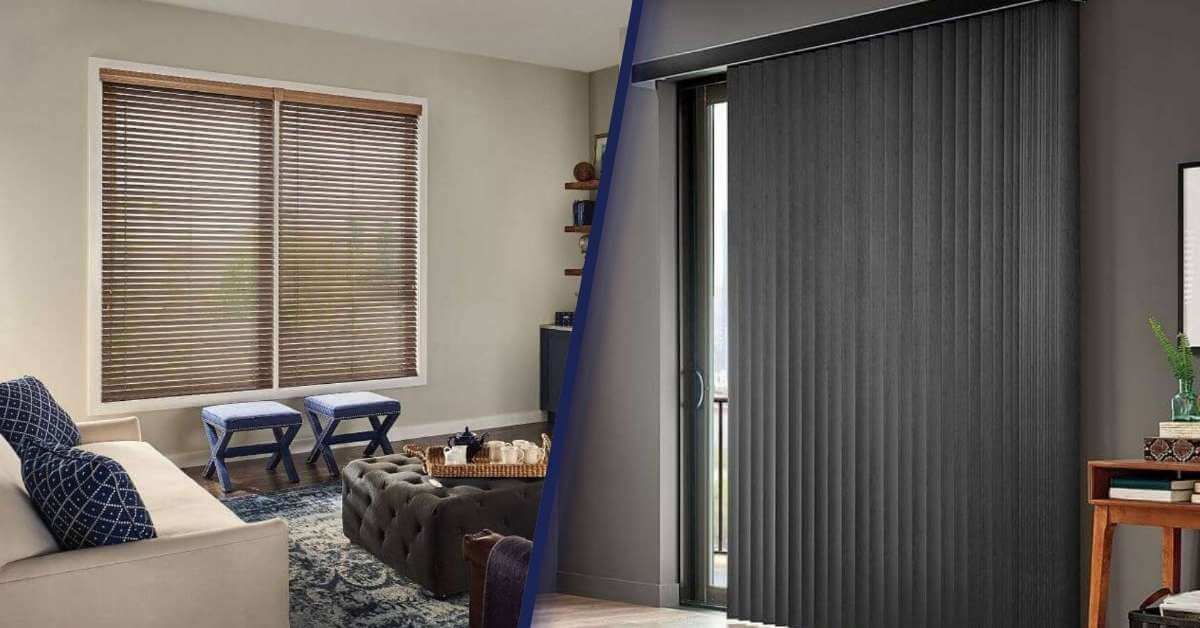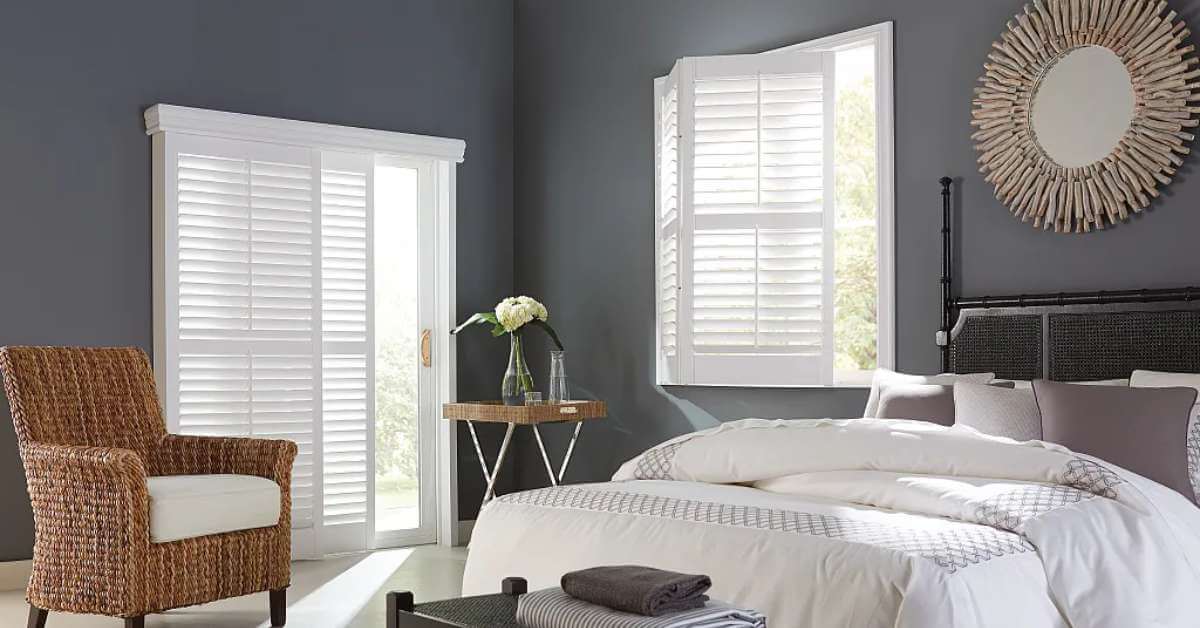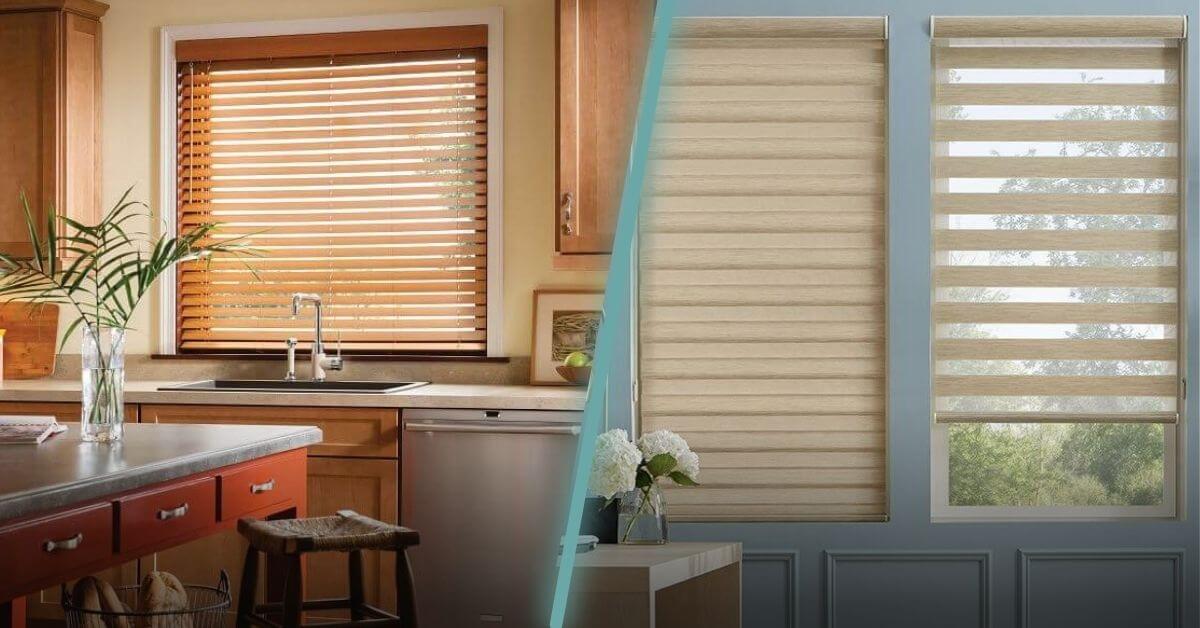Blinds are more than a decorative accent—they shape how light, privacy, and comfort function in your home every day. Whether you’re designing a new space or updating a room, the choice between horizontal and vertical blinds can have a big impact.
So, which is right for your space? It depends on your window size, room layout, and what matters most to you—like light control, privacy, or ease of use. Here’s how to decide between horizontal blinds vs vertical blinds for your Loveland, CO home.
Understanding the Difference
What Are Horizontal Blinds?
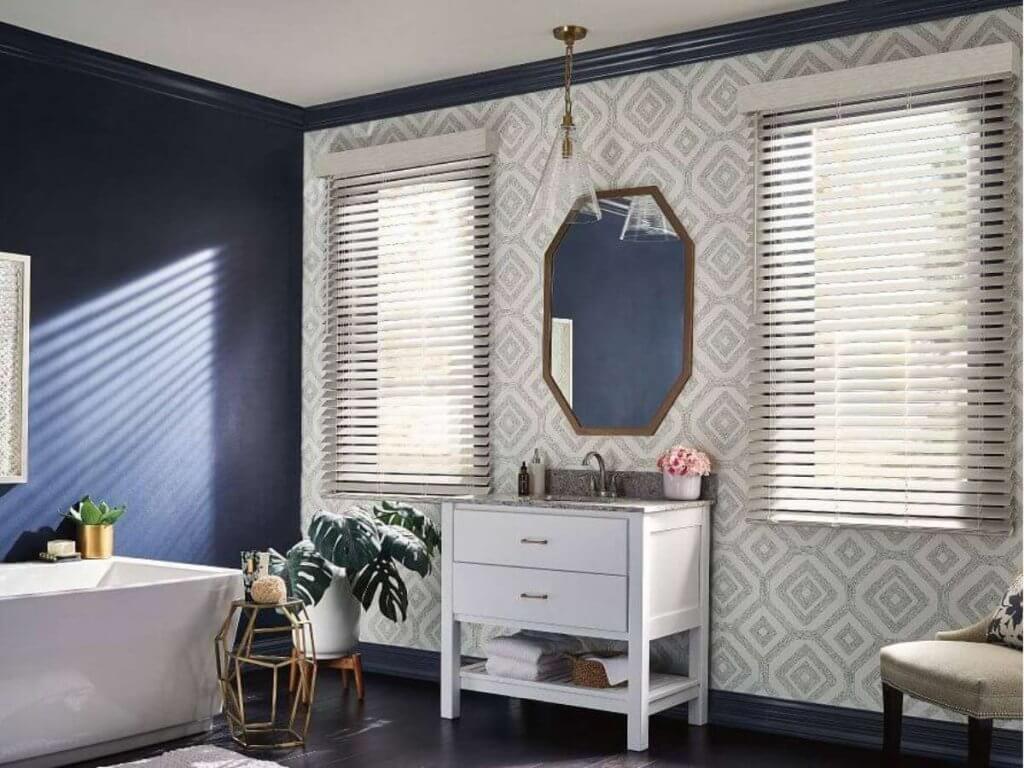
Horizontal blinds have slats that run from side to side and tilt or lift up and down. They’re commonly used on standard-sized windows and come in a variety of materials like wood, faux wood, aluminum, and vinyl. Their structured design provides excellent privacy, light control, and a traditional look.
What Are Vertical Blinds?
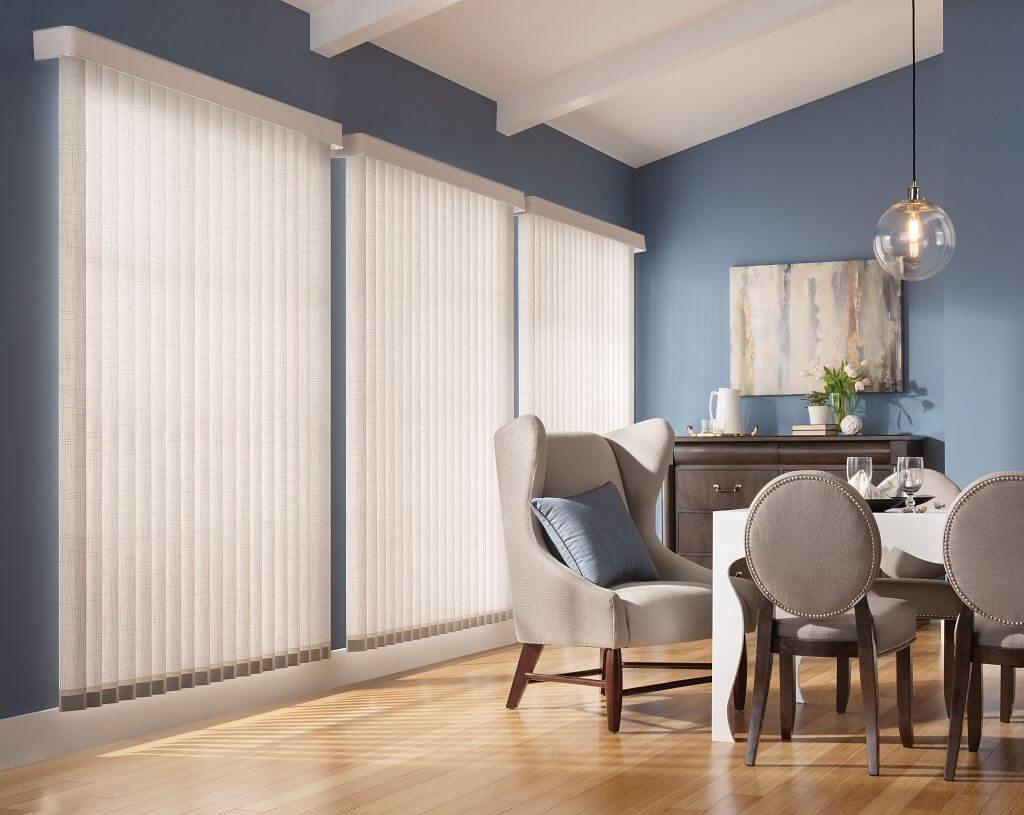
Vertical blinds feature vertical slats that move side-to-side along a track. They’re especially effective for large windows or sliding glass doors and offer a streamlined, modern look. Their ability to open fully to one side makes them ideal for wide openings and easy access to doors.
Horizontal Blinds vs Vertical Blinds: Key Comparisons
Feature | Horizontal Blinds | Vertical Blinds |
Best for | Small to medium windows | Large windows and sliding glass doors |
Light Control | Precise tilt control | Wide-angle coverage |
Privacy | Excellent | Good (small gaps may occur) |
Aesthetic | Classic and traditional | Sleek and modern |
Energy Efficiency | Strong insulative benefits | Moderate insulation |
Cleaning | Requires frequent dusting | Easier to wipe down |
Durability | Ideal for low-traffic areas | Better for high-traffic zones |
Installation | Usually inside window frame | Ceiling or wall-mounted |
Cordless Options | Widely available | Available |
Motorization | Available | Available |
Customization | High – materials, colors, finishes | High – slat widths, finishes, controls |
Noise Reduction | Good | Moderate |
Security | Great for blocking outside visibility | Effective coverage for large glass areas |
Visual Impact and Style
Blinds don’t just serve a functional role—they also shape how your space feels.
- Horizontal blinds provide a layered, structured appearance and are well-suited to traditional or transitional interiors. Their classic design works seamlessly in bedrooms, offices, and main living areas.
- Vertical blinds offer clean lines and a more modern aesthetic. They’re an ideal match for open floor plans and rooms with large expanses of glass, such as patio doors or floor-to-ceiling windows.
Both types can be customized in color, finish, and slat size to fit your home’s overall interior design and functional needs.
Performance Where It Matters
Light Control
If precise control over daylight is important, horizontal blinds excel. You can easily tilt the slats to let in just the right amount of light without fully raising the blinds.
Vertical blinds provide quick, large-scale control—open them fully to brighten the space or close them completely to dim a room. While their angle control is less precise, they’re great for managing light over wide surfaces.
Privacy and Security
Horizontal blinds offer tighter slat closures, which means stronger privacy—a top priority for bedrooms, bathrooms, or street-facing windows.
Vertical blinds still provide good coverage, especially when closed fully, but may allow for minor gaps depending on fit and alignment. Still, they are highly effective for maintaining visual privacy on large windows.
Energy Efficiency
Both types help insulate your home, but horizontal blinds tend to be better at trapping air between the window and the room, reducing heat transfer.
Vertical blinds can help with solar heat gain control—especially on large windows that get direct sun—but may be less effective in sealing off airflow.
Durability and Maintenance
- Horizontal blinds are sturdy and long-lasting, especially when made from aluminum or faux wood. They’re best for areas without frequent use or contact, as the slats can bend or warp under stress.
- Vertical blinds perform well in high-traffic areas like patios or doorways where blinds are opened and closed often. The individual slats are easy to clean or replace if damaged.
From a maintenance perspective, vertical blinds are typically easier to keep clean, since they collect less dust than horizontal slats.
Choosing by Room
Living Room
If your living room features large windows or access to a patio, vertical blinds allow for easy movement and clean sightlines.
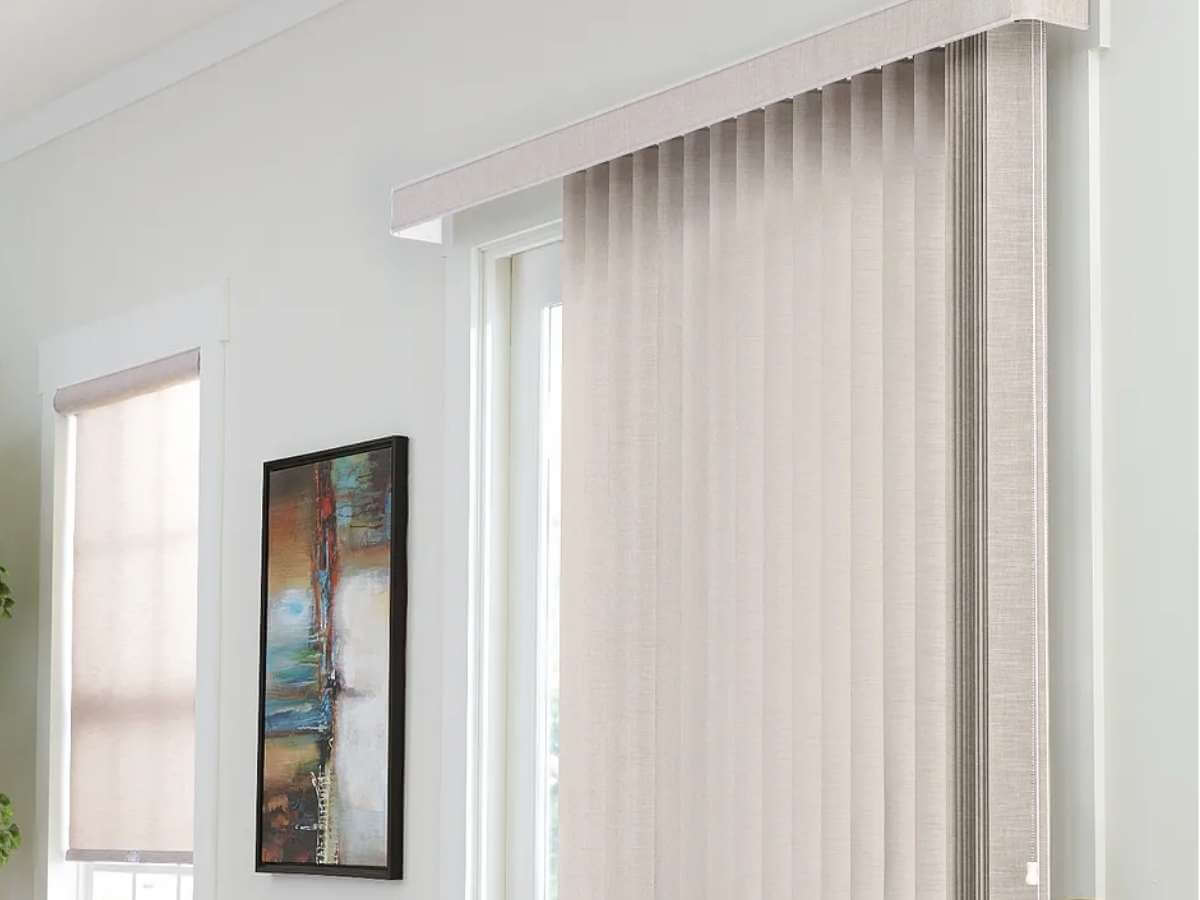
Bedroom
For a space that prioritizes privacy, room darkening, and noise reduction, horizontal blinds are a smart choice.
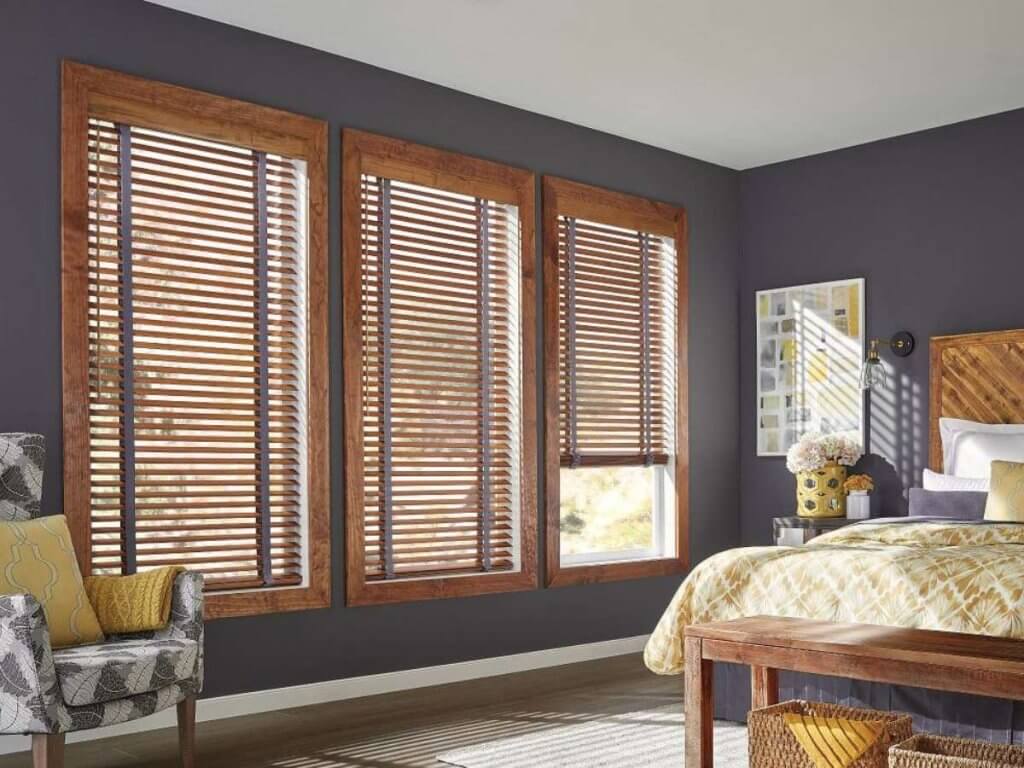
Kitchen
Durable, easy-to-clean horizontal blinds in faux wood or aluminum work well in spaces exposed to humidity and frequent use.
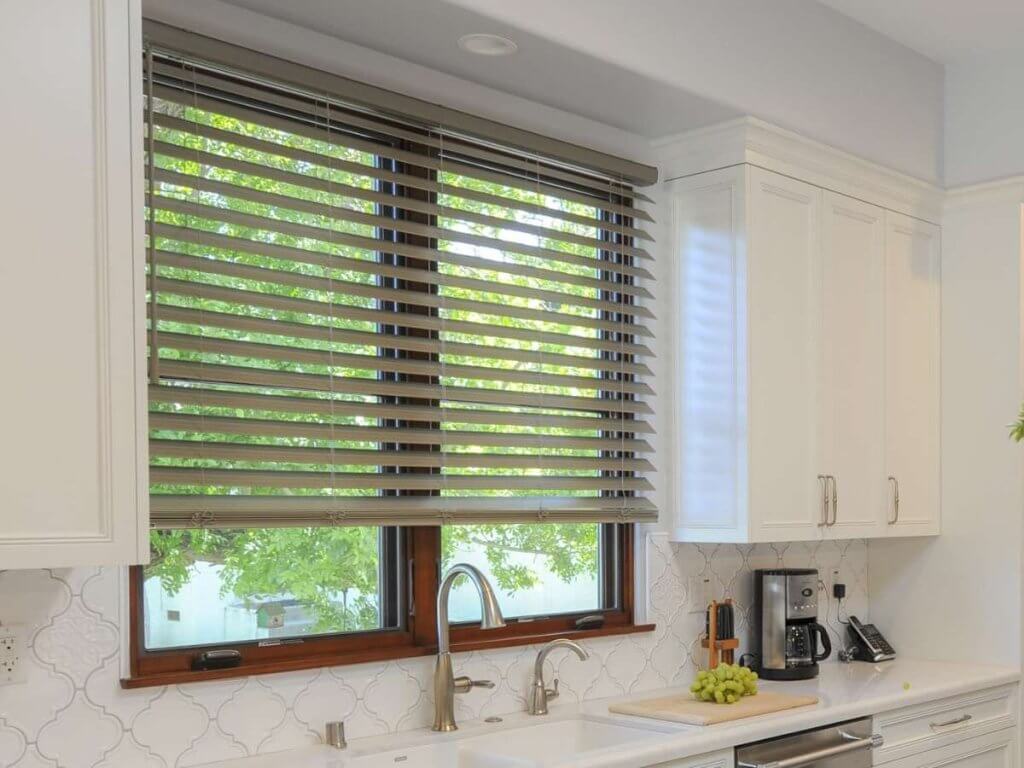
Office
Horizontal blinds help reduce glare and allow for subtle adjustments throughout the day to maintain comfort and focus.

Key Takeaways
- Horizontal blinds provide detailed light control, strong privacy, and suit standard windows and traditional decor.
- Vertical blinds are best for sliding glass doors or large windows, offering a modern look and easier maintenance.
- Both options come in cordless and motorized styles, enhancing safety and convenience.
Consider your window size, daily use, cleaning preferences, and design goals when choosing between the two.
FAQs about Horizontal and Vertical Blinds
1. Are vertical blinds outdated?
Not at all. With modern finishes and minimalist hardware, vertical blinds remain a popular, stylish option for large windows and sliding doors.
2. Which blind style is safer for kids or pets?
Both horizontal and vertical blinds are available as cordless blinds or with motorized operation—eliminating dangling cords and making them safer for homes with children and pets.
3. Can I install motorized versions of both types?
Yes. Motorized blinds are available for both horizontal and vertical configurations, offering easy operation and compatibility with smart home systems.
Find the Right Fit with Galaxy Window Coverings
Still deciding between horizontal and vertical blinds? The team at Galaxy Window Coverings in Loveland, CO is here to help. With personalized service, quality materials, and expert installation, we make it easy to choose the right blinds for your home’s layout, style, and everyday needs.
Schedule your free in-home consultation today and explore blinds that combine form, function, and long-term performance.

